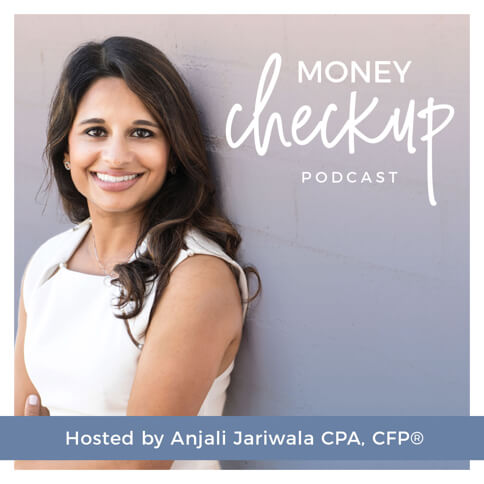In December, Congress approved the Setting Every Community Up for Retirement Enhancement Act (SECURE). This legislation made some small but important changes to the rules governing IRAs, 401(k)s, and employer-sponsored retirement plans.
Here are some key changes that might affect you or your loved ones.
Required Minimum Distributions
In the past, as soon as you turned 70.5, you were required to start taking distributions from your retirement accounts. You could delay your first distribution until April 1 of the subsequent year, but that meant you had to take two distributions from your IRAs and/or 401(k)s in that year.
Under the SECURE Act, Required Minimum Distributions (RMDs) won’t start until you turn 72. Similar to the old law, you can still delay your first distribution until April 1 of the following year. For example: If you turn 72 in November 2025, you can take two distributions in 2026 instead of taking one in 2025 and your next one in 2026.
Note that this new rule applies only to people who will turn 70.5 in or after 2020. If you or an aging relative already turned 70.5, the old RMD rules still apply.
The SECURE Act continues to allow Qualified Charitable Distributions. QCDs allow you to reduce your RMD by making a qualified charitable distribution of up to $100,000 from your retirement account. This is a great tax planning opportunity for those who are charitably inclined and may have a large RMD.
Traditional IRA Contributions
The SECURE Act lifts the age cap on traditional IRA contributions. Instead of stopping your contributions at age 70.5, you can continue contributing to a traditional IRA throughout your life, as long as you have earned income at that age.
Early Withdrawal Penalties
Prior to the SECURE Act, if you pulled money out of an IRA or a 401(k) for any reason prior to age 59.5, you had to pay income tax on the distribution as well as a 10% early withdrawal penalty.
The new law carves out an exception for childbirth and adoption. You can withdraw up to $5,000 per child penalty-free for a qualified birth or adoption. The distribution must occur after the baby is born or after the adoption is completed. The distribution is still subject to income tax, but not the 10% early withdrawal penalty.
New Rules for Inherited IRAs
In the past, if you inherited an IRA from someone who was not your spouse, you could take distributions based on your expected lifespan, whether that was five years or 50. This was also known as the “stretch provision.”
Under the new SECURE Act rules, if you inherit an IRA from someone who is not your spouse, the entire IRA must be emptied by the end of the tenth year. You do not need to take 10 equal distributions, so if you inherit an IRA, talk to your financial advisor about how you can strategically make use of the balance. For example, if you inherit an IRA and plan to retire in five years, it may make sense to delay taking distributions until year six when your income may be lower.
This change does not apply to IRAs inherited by spouses. If you inherit your spouse’s traditional IRA, you can cash it out and pay income tax on the distributions (but not the typical 10% penalty), take ownership of the account yourself, or act as the beneficiary according to your spouse’s or your own RMD schedule.
Small Business Credit for Establishing a Retirement Plan
If you establish a small business-sponsored retirement plan — including a 401(k), 403(b), SEP IRA or SIMPLE IRA — your business is now eligible for a credit of up to $500 for up to 3 years to help cover the startup costs of establishing that plan.
The SIMPLE Act defines a “small business” as one with 100 or fewer employees who receive at least $5,000 in annual compensation.
Auto-Enrollment Option for Retirement Savings
In addition to the previous credit, small businesses that set up auto-enrollment in a retirement plan are eligible for another $500 credit per year for three years. This credit applies when retirement plan participants are automatically set up to contribute a percentage of their paychecks to retirement.
Note that this credit applies when an employer adopts auto-enrollment or sets up a new plan with auto-enrollment. If your small business has a retirement plan but you haven’t set up auto-enrollment, you may still be eligible for this credit.
One additional change: The maximum default contribution used to be 10% of an employee’s pre-tax pay. It is now 15%.
Inclusion of Part-Time Workers in Retirement Plans
Prior to the SECURE Act, employees were eligible to participate in an employer-sponsored retirement plan if they worked 1,000 hours in a single year.
Under the new law, employees who work 500 hours in each of three consecutive years are now eligible to participate in employer-sponsored retirement plans. The 1,000-hour provision is still in place; this is an expansion of who can participate in a retirement plan.
Additional Provisions for Student Stipends, Student Loans and More
A few other important changes in the SECURE Act include:
A graduate or postgraduate stipend, like those paid to postdoctoral fellows, is now counted as earned income, which qualifies for contributions to an IRA.
The language on 529 distributions has expanded. Up to $10,000 in distributions from 529s can now be used to pay principal and interest on qualified education loans. This change is retroactive to 2019, meaning you could take a distribution from your 529 now and apply it to your loans before the tax year ends on April 15.
In the past, if you wanted to set up an employer-sponsored retirement plan and make a contribution before the end of the year, you had to do so by Dec. 31. Now, you have until you file your business tax return — including extensions — to set up an employer-sponsored retirement plan. This gives small business owners or solo entrepreneurs more flexibility on setting up a retirement plan and maximizing contributions.
Finally, it’s essential to note that the SECURE Act significantly increased penalties for failing to file your income tax returns and IRS Form 5500s on time. Work with your CPA or financial advisor to make sure you file your returns on time, and to ensure that you take advantage of these changes wherever you can!




